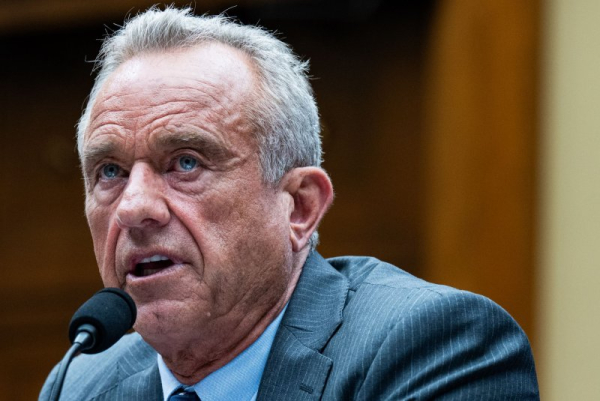

U.S. Secretary of Health and Human Services Robert F. Kennedy Jr. testifies at a House committee on June 24. The FDA on Monday approved the use of a new blue color additive from the gardenia fruit, the fourth coloring from natural sources added in the last two months. Photo by Annabelle Gordon/UPI. | License Photo
The U.S. Food and Drug Administration on Monday approved the use of a new blue color additive from the gardenia fruit, the fourth coloring from natural sources added in the last two months.
The blue color, which comes from the white flowering evergreen, can be used for sports drinks, flavored or enhanced non-carbonated water, fruit drinks, ready-to-drink teas plus hard and soft candy, the FDA said in a news release.
The health agency also announced a letter was sent to manufacturers encouraging them to phase out Red No. 3 in foods sooner than Jan. 15, 2027, which is the required deadline announced in April by Health and Human Services Secretary Robert F. Kennedy Jr. The dye has been linked to cancer in rats at high amounts.
At that time, Kennedy announced measures to work with the industry to phase out petroleum-based synthetic dyes in food. They have committed to ending 40% of the additives.
“Every day, children are exposed to synthetic chemicals in food that serve no purpose,” Kennedy said in a news release. “The FDA’s approval of gardenia blue shows we’re finally putting kids first. Thanks to Dr. Marty Makary’s bold leadership, we’re cutting through industry influence and taking decisive action to make American Healthy Again.”
Makary, the FDA commissioner, said: “Now, by extracting the palette of available colors derived from natural sources, food manufacturers have a variety of options available that will make it easier to end their use of petroleum-based dyes.”
The coloring is made by refining the compound genipin. It is derived from crushed gardenia jasminoides Ellis fruit, which often is used in traditional Chinese medicine.
Soy, which is a potential allergen, is used to make gardenia blue, but the group said it is detected in the additive and won’t cause allergic reactions.
Gardenia Blue Interest Group asked to exempt it from labeling. The FDA on July 9 said it is reviewing the request.
In May, three other colors were approved: galdieria extract blue, white calcium phosphate and butterfly pea flower extract in blue, purple and green.
Color additives must be approved by the FDA before they may be used in foods.
On Friday, Consumer Brands announced a voluntary commitment to encourage makers of consumer packaged goods and beverage products to remove certified Food, Drug and Cosmetic colors from products served in schools nationwide by the start of the 2026-2027 school year.
The International Association of Color Manufacturers said in a news release that artificial dyes are “essential for consistency, visual appeal and consumer trust in food products.”
Several major food companies are removing synthetic food colorings from their products, including Kraft Heinz and General Mills by the end of 2027.
But Mars, which makes M&M’s and Skittles, said it will continue using the synthetic dyes in its candies, reversing a pledge the company made in 2016 to remove artificial colors from all foods and snacks.
The company told The New York Times that its products are “safe to enjoy and meet the high standards and applicable regulations set by food safety authorities around the world.”
A spokesman for the National Confectionery Association, Christopher Gindlesperger, told the New York Post: “People can freely use cannabis, THC products, alcohol and cigarettes but vibrantly colored candy is an issue? Ge me a break.”